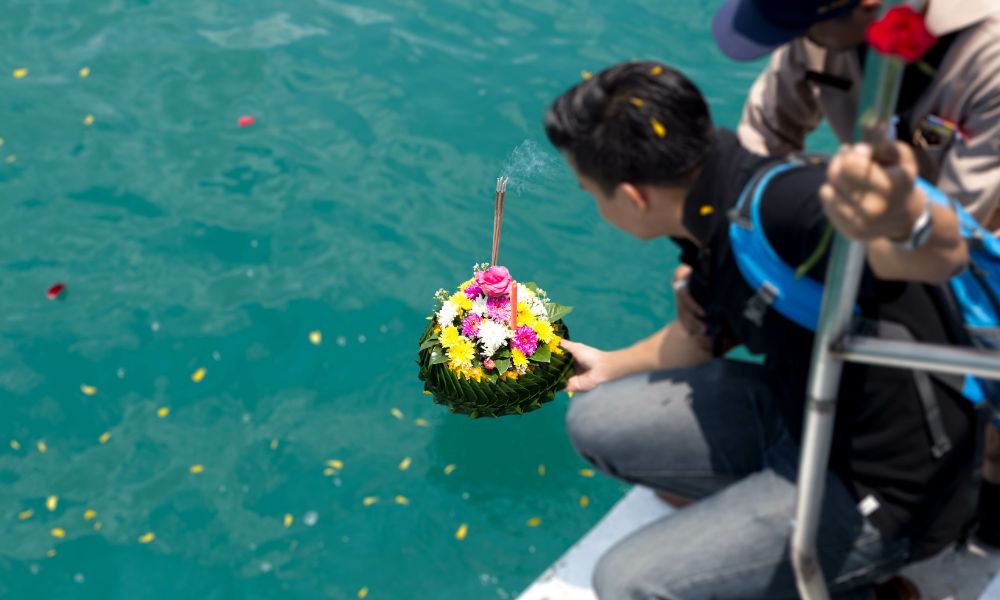Scattering Ashes at Sea: What You Need To Know

Making arrangements for a loved one’s final resting place adds stress, and often a financial burden, to family members’ grief. It’s a little easier if the person who has passed away left specific instructions about what they wanted.
Sometimes those instructions include a request for scattering ashes at sea. What you need to know is that while the United States allows the disposal of human remains in the form of ashes by scattering them at sea, you must adhere to certain regulations to do it legally and responsibly.
All Materials Must Be Biodegradable
Cremains, or the ashes of the deceased, are naturally biodegradable. But families often also wish to toss memorial wreaths, flowers, or some other type of marker or object that was significant to the deceased.
U.S. law requires biodegradable flowers, wreaths, or urns when scattering a loved one’s ashes at sea—the law disallows the use of plastics and metal. Materials should decompose naturally. Urns, if thrown into the sea, must not float.
This law is in accord with the idea of dispersing human remains in an environmentally responsible way. Scattering ashes at sea is a peaceful and soothing reminder of the transitory nature of our physical beings, contrasted with the eternal aspect of the spirit and the sea.
You Must Be at a Specific Distance and Depth
Scattering must occur a minimum of three nautical miles from shore to comply with U.S. law. Depending on the location, there may also be depth regulations related to the type of boat that will travel to the scattering site or rules imposed by the state that encompass the waters where the scattering will occur.
You Must Have a Permit
The United States Environmental Protection Agency (EPA) requires those who wish to scatter ashes at sea to obtain a permit—called a Marine Protection, Research, and Sanctuaries Act (MPRSA) permit—for the scattering itself and the vessel that will transport the ashes to the scattering site. The state may impose additional requirements that regulate the scattering destination, so be sure to research those.
The Crematory Must Be Licensed
Before making any arrangements for scattering ashes, make sure the cremation service you hire has the necessary license to perform cremation services and prepare ashes for scattering. It may surprise you that there are operations that perform cremations that purport to be legitimate but do not maintain proper state licensure. Your secretary of state’s office can help you confirm a crematory’s licensure and authorization to prepare ashes for disposal at sea.
The Hired Vessel Must Be Certified
Like the crematory, the captain of the vessel you hire should also maintain all required certifications and licenses that allow the vessel to carry passengers and cremains to a scattering site at sea. While a boat owner may claim they can perform this service for you, check with local authorities, so you are following the law.Your captain must also inform you of unfavorable weather conditions. Don’t try to go through with a scattering service in rough seas or windy conditions.
Attended or Unattended Ceremonies
Family members may wish to bring clergy with them on the boat to conduct a service for the scattering. Other families may wish to honor their loved one’s desire to have their ashes scattered at sea but be unable to travel to the harbor to board the selected boat.
It’s possible to arrange an unattended scattering at sea. What you should know is you need to contact a licensed direct cremation service that will respectfully scatter ashes, along with flowers or a wreath at your request.



